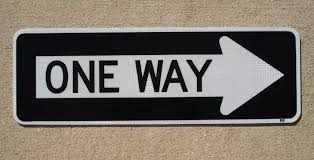How a tutor can help his learner understand more about his new community. Here are some tips related to topics like how safe a city is, how to commute, and how to react to crimes.
This post is the continuation of Using the LEA Method to Teach More than Grammar where I analyzed a student's response to a picture of Everett Square. Here I'll discuss how a tutor can help a learner better understand their new community - again using the same picture:

The tutor can start the lesson with the question
The cross street in the picture is Norwood Street.
But does your learner know that Norwood Street intersects with Broadway?
Does your learner understand the verb intersects and the noun intersection? If not, teach the words!
Does your learner know that Norwood is also the name of another small city close to Boston? If not, teach Norwood's location with a map, and show how close Norwood is to Everett and Boston, and how one would drive from one city to the other. In other words, teach your learner as much cultural knowledge as you can.
Then the tutor can continue: Do your leaner know which other streets intersect Norwood Street? If not, teach the names of the intersecting streets (Oakes Street, for example.)
The learner also possibly might not know that Broadway is the busiest street in Everett, and that Everett Square can be dangerous if you're on foot. The sign:

means that drivers can drive only in a single direction. In cities, such streets normally have a high traffic flow . Drivers are usually driving at high speeds. Such speedy driving can result in accidents between cars and pedestrians. Does your learner know that? Does she know she has to be very careful when crossing Norwood Street in Everett Square?
But let's look beyond Everett Square at what you can teach your learner about Everett Square as a downtown intersection.
Let's look at Everett itself. Heavily industrialized, Everett is also subject to a fairly high number of apartment and housebreak-ins. Does your learner know that? Do your learner know how to dial 911 to report a break-in?
Does your learner know that if their house has been burglarized, he should get out of the house and call 911 from outside the home, to avoid a confrontation with the burglar?
Does your learner know that the police will call him back and make sure the criminal is still not in their house?
Finally, does your learner know how to file a police report, and possible insurance claim, in response to a break-in? Moreover, is your learner even aware of the relative low cost of apartment insurance?
I'll cover these topics and more in my next post!
ENGLISH AT LARGE
Literacy and Learning for Life
Join the conversation
This post is the continuation of Using the LEA Method to Teach More than Grammar where I analyzed a student's response to a picture of Everett Square. Here I'll discuss how a tutor can help a learner better understand their new community - again using the same picture:

What do you know about the streets in Everett Square?
The cross street in the picture is Norwood Street.
But does your learner know that Norwood Street intersects with Broadway?
Does your learner understand the verb intersects and the noun intersection? If not, teach the words!
Does your learner know that Norwood is also the name of another small city close to Boston? If not, teach Norwood's location with a map, and show how close Norwood is to Everett and Boston, and how one would drive from one city to the other. In other words, teach your learner as much cultural knowledge as you can.
Then the tutor can continue: Do your leaner know which other streets intersect Norwood Street? If not, teach the names of the intersecting streets (Oakes Street, for example.)
The learner also possibly might not know that Broadway is the busiest street in Everett, and that Everett Square can be dangerous if you're on foot. The sign:
means that drivers can drive only in a single direction. In cities, such streets normally have a high traffic flow . Drivers are usually driving at high speeds. Such speedy driving can result in accidents between cars and pedestrians. Does your learner know that? Does she know she has to be very careful when crossing Norwood Street in Everett Square?
But let's look beyond Everett Square at what you can teach your learner about Everett Square as a downtown intersection.
Let's look at Everett itself. Heavily industrialized, Everett is also subject to a fairly high number of apartment and housebreak-ins. Does your learner know that? Do your learner know how to dial 911 to report a break-in?
Does your learner know that if their house has been burglarized, he should get out of the house and call 911 from outside the home, to avoid a confrontation with the burglar?
Does your learner know that the police will call him back and make sure the criminal is still not in their house?
Finally, does your learner know how to file a police report, and possible insurance claim, in response to a break-in? Moreover, is your learner even aware of the relative low cost of apartment insurance?
I'll cover these topics and more in my next post!
Happy tutoring!

Tatyana Pavlova
Bachelor of Arts in Linguistics/ Bashkir State University
MA Education/ESL 2014, Cambridge College

Tatyana Pavlova
Bachelor of Arts in Linguistics/ Bashkir State University
MA Education/ESL 2014, Cambridge College
ENGLISH AT LARGE
Literacy and Learning for Life
Join the conversation

No comments:
Post a Comment